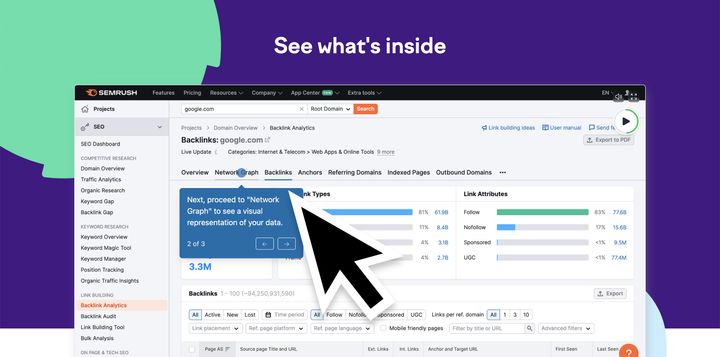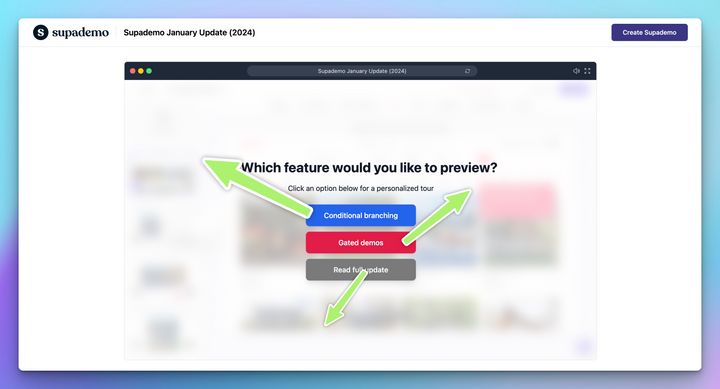In today's fast-paced business landscape, providing potential customers with a hands-on experience of your product or service is crucial. Demo software plays a pivotal role in showcasing the value and capabilities of your offerings. However, the age-old question remains: should you opt for Interactive Demos or stick with Traditional Demos? In this blog, we'll explore the benefits and drawbacks of each approach and help you decide which demo type aligns best with your business goals and enhances customer experience.
Traditional Demos: The Classic Approach
Traditional demos have been a time-tested method for showcasing products for many decades. In this classic approach, a sales representative conducts a one-way presentation to an audience, typically consisting of potential customers or stakeholders. The purpose of these demos is to demonstrate the product's features, functionalities, and benefits in a structured and controlled manner.
Advantages of Traditional Demos
a) Simplicity: One of the key advantages of traditional demos is their simplicity. They are easy to set up and do not require advanced technical expertise. As a result, any team member can conduct these demos, making them accessible to the entire sales team. This simplicity facilitates quick and consistent product demonstrations.
b) Structured Content: Traditional demos are usually preplanned and follow a set format. This structured approach allows the sales team to ensure that they cover all the relevant aspects of the product during the presentation. By having a predefined outline, the team can avoid missing essential details and deliver a comprehensive demonstration.
c) Controlled Message: Since the sales representative is in charge of the presentation, they have complete control over the narrative. This control ensures that the product's key selling points are emphasized, and the demo is aligned with the company's marketing strategy. The controlled message can be particularly useful in reinforcing the product's value proposition and addressing customer pain points.
Challenges of Traditional Demos:
a) Lack of Engagement: One of the main challenges of traditional demos is the limited audience interaction. As these demos primarily involve a one-way flow of information, potential customers may not feel fully engaged. The lack of interactivity can lead to disinterest or distraction, potentially causing them to lose focus on the presentation.
b) Limited Personalization: Traditional demos follow a set structure, which might not cater to the specific needs and interests of each individual prospect. Customers have different pain points and priorities, and a one-size-fits-all approach may not effectively address their unique concerns. This lack of personalization could lead to missed opportunities for building stronger connections with potential customers.
Interactive Demos: Immersive and Engaging
As customer expectations continue to evolve, businesses are recognizing the need to provide more immersive and engaging experiences for their prospects. Interactive Demos have emerged as a powerful approach to achieve this goal, as they encourage active participation from the audience, enabling them to explore the product in a personalized and hands-on manner.
Advantages of Interactive Demos:
a) Personalized Experience: One of the primary advantages of Interactive Demos is that they offer a personalized experience to each prospect. Instead of a one-size-fits-all presentation, potential customers can interact with the product, tailoring the demo to their specific needs, preferences, and pain points. This level of customization makes the demo more relevant and compelling, increasing the chances of resonating with the audience.
b) Hands-on Learning: Interactive Demos enable customers to experience the product's capabilities firsthand. This hands-on learning approach allows them to gain a deeper understanding of how the product works, what it can do, and how it can address their particular challenges. By actively exploring the product, customers can make better-informed decisions, as they have a clearer sense of the value it can bring to their operations or personal use.
c) Improved Retention: Studies have shown that interactivity leads to better information retention. When customers actively engage with the product and discover its features themselves, they are more likely to remember the details and benefits. This heightened retention can positively influence their decision-making process, making them more inclined to choose the product after the demo.
d) Real-time Problem Solving: During Interactive Demos, customers can address their questions and concerns in real-time. This immediate feedback loop allows the sales representative or demo facilitator to provide instant answers and solutions, leading to higher customer satisfaction. The ability to resolve doubts on the spot can instil confidence in the prospect and alleviate any hesitations they might have.
Challenges of Traditional Interactive Demos:
a) Technical Complexity: While Interactive Demos offer a more engaging experience, they can be more technically complex to set up and manage. Depending on the nature of the product and the level of interactivity desired, businesses may need specialized expertise or additional resources to create a seamless and user-friendly demo. However, the investment in creating an exceptional interactive experience can pay off in the form of increased customer interest and conversions. However, tools like Supademo
b) Time-Consuming: Interactive Demos may require more time to conduct compared to traditional demos. Allowing prospects to explore the product at their own pace and addressing their individual queries can extend the duration of the demo. Balancing the need for comprehensive exploration with time efficiency is crucial to ensure that the interactive demo remains engaging without becoming overly time-consuming.
How Supademo solves these Challenges?
Supademo is an AI-driven platform for creating and sharing interactive demos at scale - creating a new standard for demonstrating products and workflows. Supademo is the fastest and most user-friendly way to create click-through demos and guides with no code, for free.
It solves the technical complexity and time-consumption of creating interactive demos in the following ways:
- Ease of use: Supademo is built to be flexible for multiple use cases - and can easily be used without any training or onboarding.
- Create in minutes: With automatic text descriptions, AI voiceovers, and easy editing, anyone can create their first interactive demo in minutes.
- No coding required: Supademo is a no-code platform, so you don't need to know how to code to create interactive demos. You can use the drag-and-drop interface to create your demos, and Supademo will take care of the coding for you.
- In-Built Editor: Supademo's in-built editor makes it easy to see what your demo will look like as you're creating it. You can annote, mark and redact, and see the results immediately, without having to preview your demo.
- Embed Anywhere: Supademo makes it easy to embed your demos. You can embed your demos to a variety of platforms.
Which Approach is Right for Your Business?
In today's fast-paced business landscape, providing hands-on experiences to potential customers is crucial. Demo software plays a pivotal role in showcasing product value. The age-old question remains: Interactive Demos or Traditional Demos? Traditional demos, with one-way presentations, offer simplicity and a controlled message. However, limited engagement and personalization are drawbacks. On the other hand, Interactive Demos engage customers actively, providing a personalized experience and real-time problem-solving. Yet, they may be technically complex and time-consuming.
Supademo, an AI-driven platform, addresses these challenges effectively. It requires no coding and offers pre-built templates for ease of use. The in-built editor enables immediate visual feedback. Supademo's click-through demos can be embedded anywhere, enhancing accessibility.
Ultimately, the choice depends on a business's needs and target audience. For a more engaging, personalized, and efficient product experience, Interactive Demos, powered by Supademo, can be a compelling solution. By embracing modern tools, businesses can effectively showcase their offerings, drive customer engagement, and gain a competitive edge.




